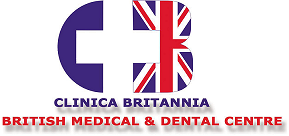Artery blockage, also known as atherosclerosis, is a condition that occurs when the arteries become narrowed and hardened due to the buildup of fatty deposits, cholesterol, and other substances. This can lead to a range of health problems, including heart disease, stroke, and peripheral arterial disease. In this blog post, we will discuss the causes, symptoms, and treatment of artery blockage.
Causes of Artery Blockage
Artery blockage is caused by the buildup of fatty deposits, cholesterol, and other substances in the inner lining of the arteries. This buildup, known as plaque, can gradually narrow and harden the arteries over time, reducing blood flow to vital organs and tissues. The following factors can increase the risk of developing artery blockage:
- Hoher Blutdruck
- Hoher Cholesterinspiegel
- Rauchen
- Diabetes
- Fettleibigkeit
- Bewegungsmangel
- Family history of heart disease or stroke
- Aging
Symptoms of Artery Blockage
The symptoms of artery blockage can vary depending on the location and severity of the blockage. Common symptoms include:
- Chest pain or discomfort, known as angina, which may feel like pressure, squeezing, or tightness in the chest
- Kurzatmigkeit
- Fatigue or weakness
- Numbness or weakness in the legs or arms
- Pain or cramping in the legs during exercise, known as intermittent claudication
- Erectile dysfunction in men
- Sudden onset of confusion, difficulty speaking, or paralysis, which may indicate a stroke.
Treatment of Artery Blockage
The treatment of artery blockage depends on the severity of the condition and the location of the blockage. In some cases, lifestyle changes, such as a healthy diet, exercise, and quitting smoking, can help to slow the progression of the disease and reduce the risk of complications. In more severe cases, medication, medical procedures, or surgery may be necessary.
Medications: Medications can help to control high blood pressure, high cholesterol, and other risk factors for artery blockage. They can also help to reduce the risk of blood clots, which can lead to heart attack or stroke.
Medical Procedures: Medical procedures, such as angioplasty or stenting, can be used to open up blocked or narrowed arteries. During these procedures, a small balloon is inserted into the artery and inflated to widen the artery, and a small mesh tube, known as a stent, may be inserted to help keep the artery open.
Surgery: In some cases, surgery may be necessary to remove or bypass the blockage. Coronary artery bypass graft surgery involves using a blood vessel from another part of the body to bypass the blocked artery, while carotid endarterectomy involves removing the plaque from the carotid artery in the neck.
Prevention of Artery Blockage
The best way to prevent artery blockage is to adopt a healthy lifestyle, which includes:
- Eating a healthy diet that is low in saturated and trans fats and high in fruits, vegetables, and whole grains
- Exercising regularly to maintain a healthy weight and reduce stress
- Quitting smoking
- Managing high blood pressure and high cholesterol
- Controlling diabetes
- Getting regular check-ups and screenings.
In conclusion, artery blockage is a common condition that can lead to serious health problems. It is important to identify and manage the risk factors for the condition and to seek medical treatment if necessary. With proper care and prevention, it is possible to reduce the risk of artery blockage and maintain a healthy heart and circulation.

